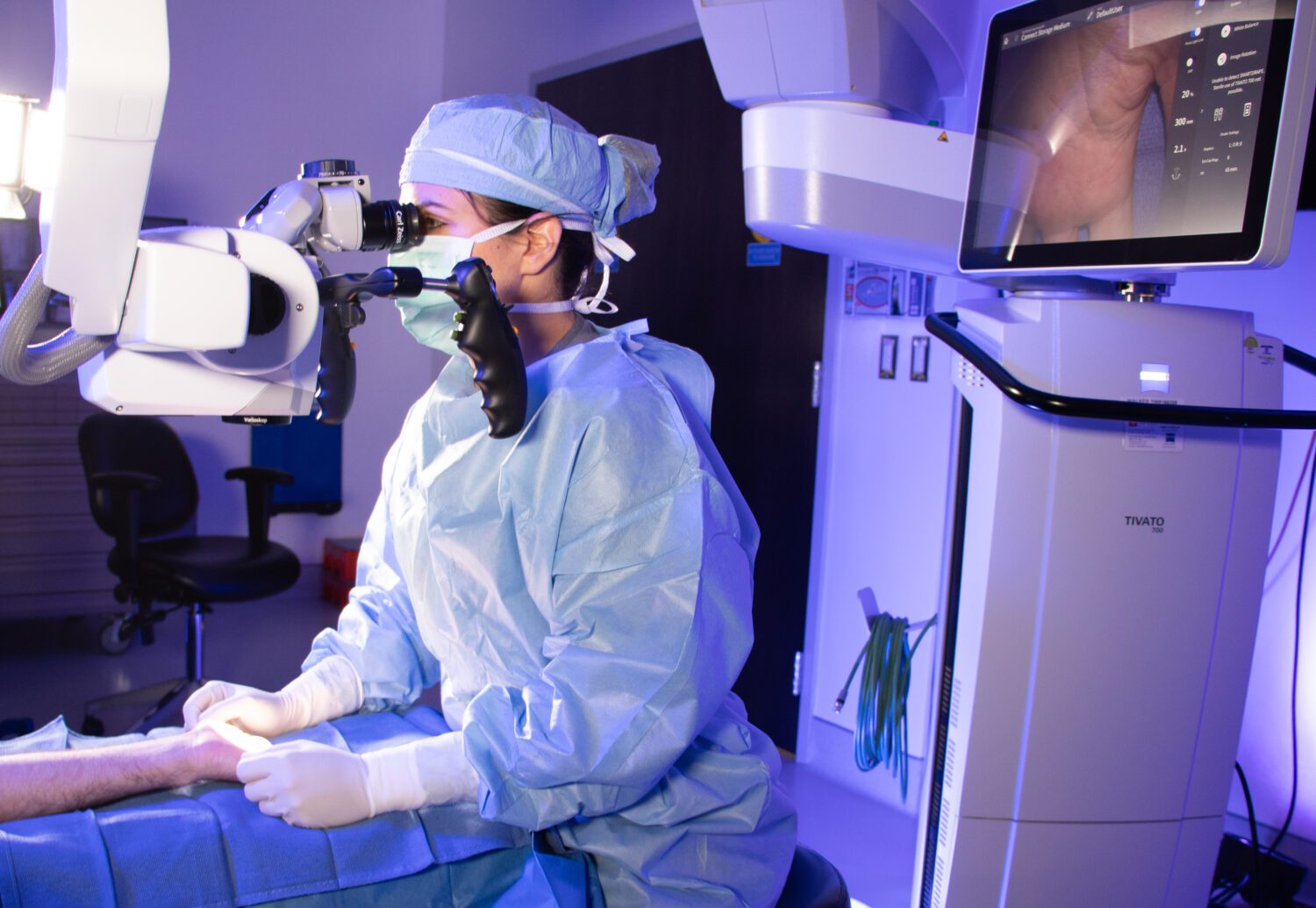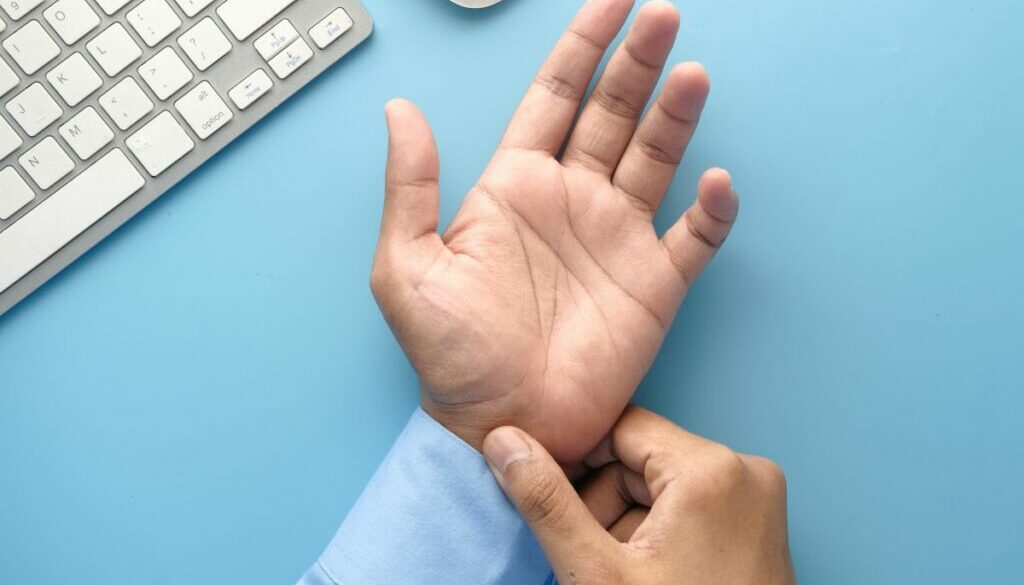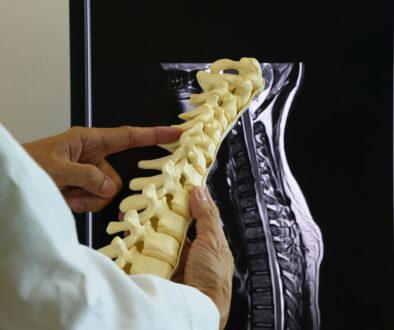What are the signs, symptoms, and remedies for Carpal Tunnel Syndrome?
Do you wake up to find your fingers tingly and numb? Do you have to shake them to get the feeling back? Does the pain radiate from your wrist into your hand? For many people, these are the symptoms of carpal tunnel syndrome which is an often debilitating condition. Dr. Erica Umpierrez wants you to better understand the signs of this syndrome and how she can treat it with a variety of surgical and non-surgical remedies.
Millions of Americans suffer from carpal tunnel syndrome and it can be really painful depending on the person. “I think many people either know someone who suffers from carpal tunnel or has had the surgery,” says Dr. Umpierrez. “It’s among the most common repetitive, straining orthopedic injuries. It can really be hard for people and impact their lives and it’s frequently the pain that drives some people to a hand surgeon like me.”
Carpal tunnel syndrome was first described in the 1800s and the first operation was performed in the 1930s. The debilitating impact of carpal tunnel syndrome can affect a person’s work and personal life. For some, even making a fist can be painful and challenging. Depending on the severity of the injury, carpal tunnel syndrome is among some of the greatest drivers for loss of time, loss of productivity, disability, and workers’ compensation claims.
Symptoms of Carpal Tunnel Syndrome
The pain in your wrist, the numbness and tingling in your fingers, and the way you fumble and drop things are among the signs of carpal tunnel syndrome.
“Many of these patients have been experiencing a lot of numbness in their affected hand, even difficulty sleeping because of the pain in their fingers. When they’re sleeping, they wake up because it can be excruciating. I’ve had patients tell me they would have to get out of bed to swing their arms to get feeling back into their hands. It’s symptoms like this and the ever-increasing pain that will eventually drive a person to seek help from me.”
The most common symptoms of carpal tunnel syndrome are:
- Weakness when gripping objects with one or both hands
- Pain or numbness in one or both hands
- Pins and needles feeling in the fingers
- Swollen feeling in the fingers
- Burning or tingling in the fingers, especially the thumb and the index and middle fingers
- Pain or numbness that is worse at night, interrupting sleep
Carpal tunnel syndrome is when the median nerve is compressed as it passes through the carpal tunnel. “I explain carpal tunnel as a pinched nerve in the wrist. In the beginning, it can cause minor symptoms such as a little numbness that comes and goes and is more of an annoyance than anything. As the condition progresses, that median nerve becomes more and more compressed by the ligament and bones that make up the tunnel that it passes through.”
The median nerve Dr. Umpierrez is referring to provides sensory and motor functions to the thumb and three middle fingers. When the nerve becomes compressed or irritated, those digits can be impacted by numbness and tingling along with pain that goes up the forearm.

What causes carpal tunnel syndrome?
Many people who suffer from carpal tunnel might associate the cause with their job or other repetitive activities they have done over the years, but this isn’t necessarily true. Most cases of the syndrome have no specific cause.
“Many think that certain jobs bring on the syndrome, for instance someone who types a lot, or that it’s an accumulation of activities over a period of time but that’s not necessarily the case,” expresses Dr. Umpierrez. “It’s really hard to pinpoint one activity or some aggravating source that is causing you to develop symptoms. Now these things can certainly contribute to your symptoms, they just aren’t necessarily the underlying reason for the development of the syndrome. But one thing we do know is that there are other diagnoses like diabetes, hypothyroidism, or rheumatoid disease that can contribute. Occasionally, a patient might have a structural issue like a cyst at the wrist that is putting pressure on the nerve, but that’s much less common. For most people though, the true reason for their carpal tunnel will remain unknown.”
How do you diagnose carpal tunnel syndrome?
Surgeons diagnose carpal tunnel syndrome by ruling out other conditions through a thorough examination which includes nerve testing. This testing stimulates the muscles and nerves in your hand to see how well they work. “Nerve testing tells me the severity of how trapped the median nerve is, and that sometimes has an impact on how strongly I might recommend surgery.”
Dr. Umpierrez made it clear that for most patients, surgery is not the first treatment option. “Many patients aren’t to the point that they need or are ready for surgery. However, there are a lot of other things we can do.
Some non-surgical options include:
- Anti-inflammatory medication These may be oral or injected into the carpal tunnel space reducing the swelling.
- Exercise or occupational therapy Stretching and strengthening exercises can be helpful in people whose symptoms have gotten better. Your doctor may recommend occupational therapy as a more structured regime to better manage your symptoms and recovery.
- Splinting your hand This helps keep your wrist from moving. It also eases the compression of the nerves inside the tunnel.
“Splints can help some people, however, if you are still experiencing extremes of pain and numbness or if you’re having difficulty sleeping, sometimes it can also be very helpful to give cortisone injections. You may need this once or twice a year to help alleviate your problems.”
Should I have carpal tunnel surgery?
Some patients who try these non-surgical treatments have success. Others may have a reduction in symptoms but then over time, the pain still grows severe. Then there are those who are too far gone to have any success with these alternative methods.
“When other treatment methods are ineffective, it’s time to have a serious conversation about surgery,” says Dr. Umpierrez. “Surgery will help reduce the pressure on the median nerve in the wrist. Most people will have less or no pain and numbness in their hand and have better hand function. The surgery will also reduce the risk of long-term nerve damage.”
The surgery is performed as an outpatient procedure. The basis of the surgery is the release of the ligament which is called the transverse carpal ligament that overlays the median nerve within the palm. There are a couple of ways that Dr. Umpierrez can approach this surgery.
“The traditional approach is an open surgery that entails a small cut in the palm of the hand just large enough to perform the ligament release. Then the other way is to make an incision in the back of the wrist and insert an endoscope with a tiny camera and the tools needed to perform the release. Both procedures are highly effective in releasing the ligament and they are quick procedures. Patients are usually given some sedation and then a little bit of a local anesthetic and in a few minutes the surgery is complete. It’s a very quick, tiny, one-inch operation.”

Recovering from carpal tunnel surgery
You should expect some pain, swelling, and stiffness after your procedure. Minor soreness in your palm may last for several weeks to several months. Grip and pinch strength usually return by about 2 to 3 months after surgery. You may have to wear a splint or wrist brace for several weeks. You will, however, be allowed to use your hand for light activities, taking care to avoid significant discomfort. Driving, self-care activities, light lifting, and gripping may be permitted soon after surgery.
“I ask my patients not to overdo it,” notes Dr. Umpierrez. “Don’t go out and try to mow the lawn on Sunday when you had surgery on Friday. Recovery of course can differ from one patient to the next but patients can anticipate getting back to a relatively normal routine fairly quickly with some symptoms gradually dissipating over time. Often after surgery, patients will come in for their postop at around a week, I’ll take out their sutures, give them some tips in terms of things that they can do, and then for most, that’s typically their last visit. That’s how minor this operation can be.”
According to Dr. Umpierrez, hand surgery, like all surgeries, has some risks but they are rare. Most patients do very well and find varying degrees of relief from the severe effects of the syndrome. Despite that, Dr. Umpierrez stresses that surgery is not her decision to make.
“Remember that just because you have a bad case of carpal tunnel, it doesn’t mean that you need surgery. If you don’t want to have surgery, that’s okay, there are other options. This isn’t cancer and it’s not heart failure. I have a variety of ways to help you and surgery should be last, unless it’s a very severe case. You’ll know when surgery is right for you and you drive the decision. We’re just part of the team.
Premier Orthopedic Hand Surgery available in Myrtle Beach and Conway
As Dr. Umpierrez underscored, it’s important to rule out other conditions besides carpal tunnel syndrome before doing anything else. That’s why your physician or a licensed hand surgeon is the first person to consult before taking any other measures when your condition becomes a concern and/or intolerable.
If you have pain in your fingers, hand, wrist, or arm, Dr. Umpierrez has the experience to help you get the relief you need. She specializes in the treatment of both simple and complex hand and upper extremity conditions as well as general orthopedic trauma. She is also fellowship-trained in modern microsurgical techniques including nerve and vessel reconstruction. Dr. Erica Umpierrez and her team at CMC Orthopaedics are ready to help you get a grip on your pain and back to doing the things you love.

Erica Umpierrez, MD
CMC Orthopaedics
Dr. Umpierrez is a fellowship trained hand and upper extremity surgeon who specializes in all conditions of the arm, including fractures, arthritis, tendon disorders, sports injuries, and nerve compression or damage. She is trained in arthroscopy, minimally invasive surgical approaches, and microvascular surgery. Dr. Umpierrez adopts a personal approach to each patient, taking time to understand them in order to develop a collaborative treatment plan that addresses their individual goals.




